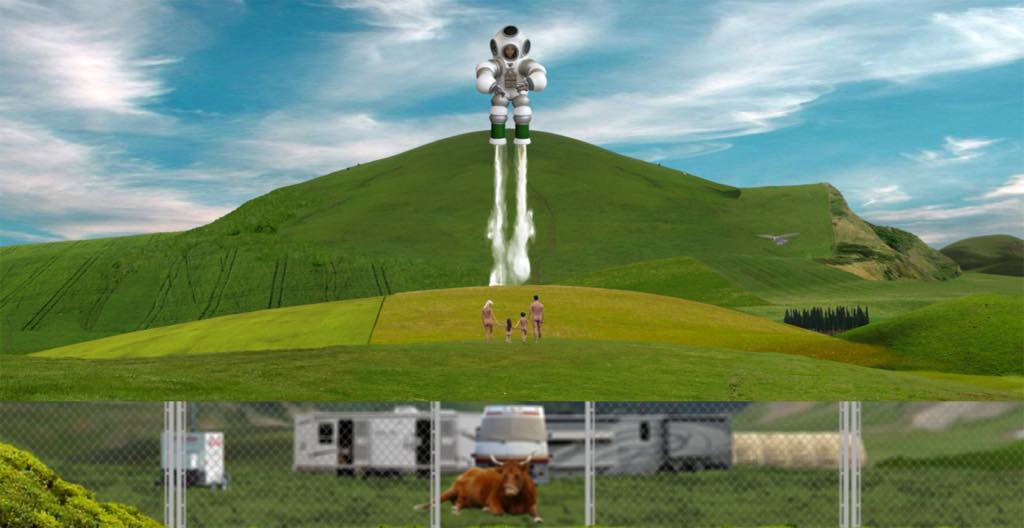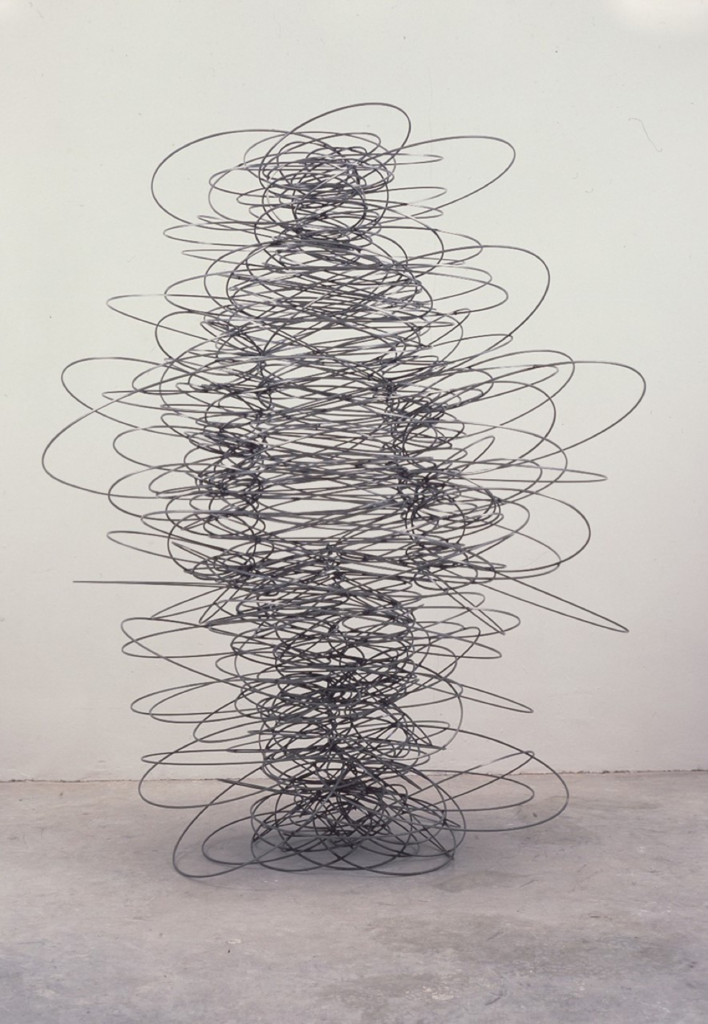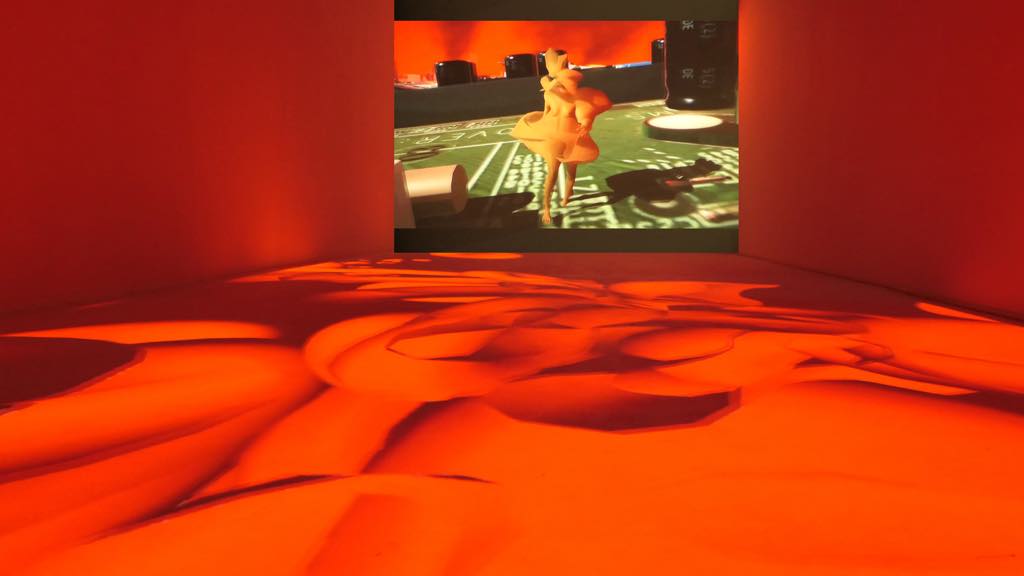Le Fresnoy–Studio National des Arts Contemporains, in the small city of Tourcoing just outside of Lille, is a hotspot where art and technology meet and merge. Its current exhibition, “Fluidités: L’Humain qui Vient,” gives 16 artists a chance to explore the future of human beings as technology increasingly invades and/or enhances our bodies and brains, and our lives in general. Will it turn us into superhumans, save us or destroy us?
The show starts off with a couple of “historical” pieces, including one of Antony Gormley’s wonderful statues of his own body, in this case just a whirl of cable, as if he had been spun into metallic thread by a high-speed machine on his way to total dematerialization.
More recent offerings take us deep into the cyber world. In an excerpt from an upcoming feature film by Shu Lea Cheang, “Uki Virus Rising,” an android and a cow, which seem to have escaped from a video game, float through a virtual biotech trash heap, a vision of a future in which biotechnology invades our bodies, for better or worse.
In Alfonso Borragán‘s conceptual contribution to the show, actual humans welcome outside elements into their bodies in another way. Fascinated by people who eat rocks and dirt, and by the “blue people” whose skin has been permanently dyed blue (the condition is called argyria) by the regular consumption of silver in the belief that it will prevent and cure illnesses, he created the installation “Daguerrolito“ (2019) by conducting an experiment on 12 people, himself among them, asking them to swallow small clumps of photosensitive silver. As it moved through their bodies, the silver captured images, as a daguerreotype would, in eight cases; the “images” on silver are displayed in the installation.
Iranian artist Yosra Mojtahedi has created a sculpture called “Vitamorphose,” which might better have been named “The Blob.” Somewhere between a living creature and an inert lump, the sculpture has a soft, rubbery, dirty-white surface and seems to breathe. When people enter the room, it reacts to their presence with movements under the surface, the way a fetus makes its mother’s belly undulate when it stretches. Imagining that it is a living being, people tend to develop relationships with it (touching is allowed). “It’s like a pet,” says Mojtahedi, “or a new form of life.”
“Citizen: The Wolf and Nanny,” by Cliff Evans, a haunting and hypnotic film with a driving pace, made entirely from images purloined from the Internet, seems to be warning of authoritarian dangers to come, even though it was made in 2009, long before the election of Trump and other political threats to democracy. After the peaceful, bucolic scenes at the beginning, the feeling of menace mounts as riot police and wolves begin to pop up in the path of a young woman running with a baby carriage, among other threatening images.
Each of the 16 artists takes an entirely different approach to the subject, with one, “Désidération” (2019), by SMITH x Diplomates x Cellule Cosmie, even enlisting the help of an astrophysicist, Jean-Philippe Uzan, to postulate the possible connection of human bodies with the cosmos and eventually turning us into extraterrestrials.
Le Fresnoy, founded in 1997, is an art school, a production center for multimedia and digital arts, and something of a community center with its own cinema. It is housed in a strange blue metal building with a grand outdoor staircase and lots of smaller outdoors staircases designed by Swiss architect Bernard Tschumi, constructed around two existing buildings. Tschumi is also designing its upcoming expansion. Its high-level temporary exhibitions are well worth a visit. Tourcoing can be reached by Métro from Lille. Click here for information on how to get there.
Favorite



